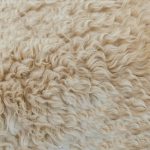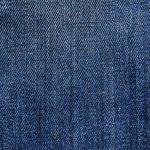You can wear polyamide if you have sensitive skin, but choose high-quality fabrics designed to reduce irritation. Polyamide is soft, moisture-wicking, and flexible, which helps keep your skin dry and comfortable. However, cheaper versions might trap sweat or contain chemicals that cause reactions. To protect your skin, pair polyamide with a breathable layer like cotton. If you want to learn smart ways to wear and care for polyamide, plus explore better fabric options, keep exploring further.
Table of Contents
Key Takeaways
- Polyamide offers softness, flexibility, and moisture-wicking, making it generally comfortable for sensitive skin.
- Its smooth texture minimizes friction, reducing irritation risk for most sensitive skin types.
- Chemical residues and tight weaves in polyamide can sometimes trigger allergic reactions or trap sweat.
- High-quality polyamide blends and careful garment selection improve comfort and reduce sensitivity issues.
- Alternatives like cotton, bamboo, or silk may be better for highly sensitive skin due to better breathability.
Understanding Polyamide: What Is It Made Of?
Polyamide is a type of synthetic fiber commonly used in clothing, especially for sensitive skin. When you hear “polyamide,” think of a polymer made from repeating units linked by amide bonds. These units come from chemical compounds like hexamethylenediamine and adipic acid.
The result is a strong, flexible fiber that resists wear and moisture. You’ll often find polyamide referred to as nylon, a popular variant.
Because it’s man-made, manufacturers can control its properties, such as softness and durability. This control means polyamide fabrics can feel smooth against your skin without being irritating.
Being man-made allows polyamide to combine softness and durability for a gentle, non-irritating feel.
Understanding its chemical makeup helps you appreciate why polyamide is designed to balance comfort with performance, making it a thoughtful choice if you have sensitive skin.
Common Uses of Polyamide in Clothing
You’ll find polyamide in many everyday clothes because it’s durable and soft against your skin.
It’s also a top choice for athletic wear since it wicks moisture and stretches with your movements.
Let’s explore how these qualities make polyamide perfect for your wardrobe.
Everyday Apparel Applications
When you choose clothing for sensitive skin, materials that combine comfort and durability become essential. Polyamide fits this need perfectly, making it a popular choice in everyday apparel.
You’ll often find polyamide in underwear, socks, and hosiery because it offers a soft touch against your skin and maintains its shape well. It’s also common in lightweight blouses and dresses, where its smooth texture prevents irritation.
Polyamide’s moisture-wicking properties help keep you dry during daily activities, reducing the chance of skin discomfort. Plus, its resistance to wrinkles and easy care means your clothes look fresh longer, which is a practical bonus.
Athletic Wear Benefits
Beyond everyday wear, athletic clothing benefits greatly from polyamide’s unique properties.
When you’re active, you want fabric that’s breathable, lightweight, and moisture-wicking—and polyamide delivers all three. It efficiently pulls sweat away from your skin, keeping you dry and comfortable during intense workouts.
Plus, polyamide’s durability means your gear withstands frequent washing and rough use without losing shape or color. You’ll appreciate how its stretchiness supports your movements without causing irritation or chafing, which is essential if you have sensitive skin.
Additionally, polyamide resists odors better than many natural fibers, so your athletic wear stays fresher longer.
Whether you’re running, cycling, or hitting the gym, polyamide’s performance benefits make it a smart, skin-friendly choice for your active lifestyle.
How Polyamide Interacts With Sensitive Skin
You’ll find polyamide offers great breathability and comfort, which can help reduce irritation on sensitive skin.
However, some people might experience allergic reactions when wearing it.
Let’s explore how these factors affect your skin’s response to polyamide.
Polyamide’s Breathability and Comfort
Although polyamide is a synthetic fiber, it offers impressive breathability that helps keep your skin dry and comfortable. When you wear polyamide garments, you benefit from its moisture-wicking properties, which pull sweat away from your skin. This is essential if you have sensitive skin, as dampness can trigger irritation.
Additionally, polyamide fabrics often have a smooth texture that reduces friction against your skin, minimizing discomfort.
Here’s what you can expect from polyamide’s breathability and comfort:
- Efficient moisture management keeps your skin dry and cool.
- Lightweight, stretchy fabric allows freedom of movement without chafing.
- Smooth surface reduces irritation by minimizing direct friction.
These factors make polyamide a practical choice if you want breathable, comfortable clothing that respects your sensitive skin.
Potential Allergic Reactions
Since sensitive skin can react unpredictably, it’s important to understand how polyamide might cause allergic reactions.
While polyamide is generally considered hypoallergenic, some people may still experience irritation or redness when wearing it. This typically happens because of the fabric’s tight weave trapping sweat and bacteria, which can aggravate sensitive skin.
Additionally, chemical residues from manufacturing or dyeing processes might trigger allergic responses in certain individuals. If you notice itching, rash, or discomfort after wearing polyamide, it’s wise to stop using it and consult a dermatologist.
To minimize risks, choose polyamide garments labeled as dermatologically tested or made with low-impact dyes. Overall, your skin’s reaction varies, so patch testing new clothing is a smart way to protect your sensitive skin from potential allergic reactions.
Benefits of Polyamide for Sensitive Skin
When your skin reacts easily to fabrics, choosing polyamide can make a noticeable difference. This synthetic fiber offers several benefits that suit sensitive skin well.
Here’s why you might want to contemplate it:
- Soft Texture: Polyamide feels smooth against your skin, reducing friction and irritation that often triggers discomfort.
- Moisture-Wicking: It efficiently draws sweat away from your body, keeping your skin dry and preventing rashes caused by dampness.
- Durability and Stretch: Polyamide maintains its shape without becoming rough or stiff, ensuring long-lasting comfort and fewer abrasive spots.
Potential Drawbacks of Polyamide for Sensitive Skin
Even though polyamide offers many benefits, you might encounter some drawbacks if you have sensitive skin. Some people find that polyamide fabrics can trap heat and moisture, which may lead to irritation or discomfort. Additionally, the synthetic nature of polyamide means it can sometimes cause allergic reactions or itchiness, especially if your skin is prone to sensitivity.
| Drawback | Description |
|---|---|
| Heat retention | Can cause sweating and irritation |
| Moisture trapping | May lead to discomfort and skin issues |
| Allergic reactions | Possible itchiness or redness for sensitive skin |
Being aware of these potential issues helps you make a more informed choice when selecting fabrics for your sensitive skin.
Comparing Polyamide to Natural Fibers for Sensitive Skin
Although polyamide offers durability and moisture-wicking properties, you might find natural fibers like cotton or silk gentler on sensitive skin.
Polyamide is durable and moisture-wicking, but cotton and silk are often gentler on sensitive skin.
These fibers tend to be more breathable and less likely to irritate.
Here’s how polyamide compares to natural fibers:
- Breathability: Natural fibers allow better airflow, reducing sweat buildup and irritation.
- Softness: Cotton and silk feel softer against your skin, minimizing friction and redness.
- Hypoallergenic qualities: Natural fibers are less likely to cause allergic reactions or exacerbate sensitivity.
While polyamide excels in durability and moisture management, natural fibers often provide superior comfort for sensitive skin.
Choosing what works best depends on your skin’s reactions and personal preference.
Expert Tips for Wearing Polyamide With Sensitive Skin
Since polyamide can sometimes irritate sensitive skin, you’ll want to take specific steps to minimize discomfort.
First, wear polyamide garments as a middle layer, placing a soft cotton layer directly against your skin to reduce friction.
Choose polyamide blends with breathable fabrics to improve airflow and reduce sweat buildup, which can cause irritation.
Look for seamless or flat-seam construction in polyamide clothing to avoid chafing.
If you notice redness or itching, limit the duration you wear polyamide items and switch to other materials when possible.
Always opt for high-quality polyamide products, as cheaper versions may contain additives or dyes that aggravate sensitive skin.
Care and Maintenance of Polyamide Clothing to Minimize Irritation
When you care for your polyamide clothing properly, you can reduce the risk of skin irritation substantially.
Keeping your garments clean and fresh helps prevent buildup of sweat, oils, and detergents that may aggravate sensitive skin.
Follow these care tips:
- Use gentle detergents: Choose fragrance-free, hypoallergenic detergents to wash your polyamide clothes. Harsh chemicals can irritate delicate skin.
- Wash in cold water: Cold water prevents fabric damage and maintains the integrity of polyamide fibers, reducing roughness against your skin.
- Air dry your clothes: Avoid high heat from dryers, which can weaken fibers and cause stiffness. Air drying preserves softness and comfort.
Alternative Fabrics to Consider for Sensitive Skin
Proper care of polyamide clothing can greatly reduce irritation, but sometimes you might still find the fabric uncomfortable for sensitive skin. If that’s the case, exploring alternative fabrics can help you avoid discomfort. Natural fibers like cotton and bamboo are breathable and gentle on the skin, reducing irritation risks. Silk offers a smooth texture, ideal for those with extreme sensitivity. Linen is another breathable option, perfect for warmer climates.
| Fabric | Benefits |
|---|---|
| Cotton | Soft, breathable, hypoallergenic |
| Bamboo | Moisture-wicking, antibacterial |
| Silk | Smooth, reduces friction |
Frequently Asked Questions
Is Polyamide Environmentally Friendly Compared to Other Synthetic Fibers?
You’ll find polyamide less eco-friendly than natural fibers since it’s petroleum-based and energy-intensive to produce. However, compared to some synthetics, it’s durable and recyclable, which can help reduce environmental impact if managed properly.
Can Polyamide Clothing Be Recycled or Repurposed?
You might think polyamide clothing ends up in landfills, but you can actually recycle or repurpose it. Although challenging, many programs and creative crafters turn polyamide into new fibers or stylish accessories, reducing waste effectively.
Does Polyamide Affect Moisture-Wicking Properties in Athletic Wear?
You’ll find polyamide enhances moisture-wicking in athletic wear by drawing sweat away from your skin quickly. Its lightweight, breathable nature keeps you dry and comfortable during intense workouts, making it a popular fabric choice.
How Does Polyamide Perform in Extreme Weather Conditions?
You might think polyamide struggles in extreme weather, but it actually excels. It’s durable, moisture-wicking, and quick-drying, so it keeps you comfortable whether you’re facing intense heat or freezing cold conditions.
Are There Any Special Treatments Applied to Polyamide Fabrics?
Yes, polyamide fabrics often get special treatments like moisture-wicking, anti-odor, and UV protection finishes. These treatments help enhance performance, comfort, and durability, so you can trust your polyamide gear in various conditions.
- Does Chiffon Fabric Stink - July 15, 2025
- Does Chiffon Fabric Affect the Economy - July 15, 2025
- Does Cotton Fabric Have a Nap - July 15, 2025







